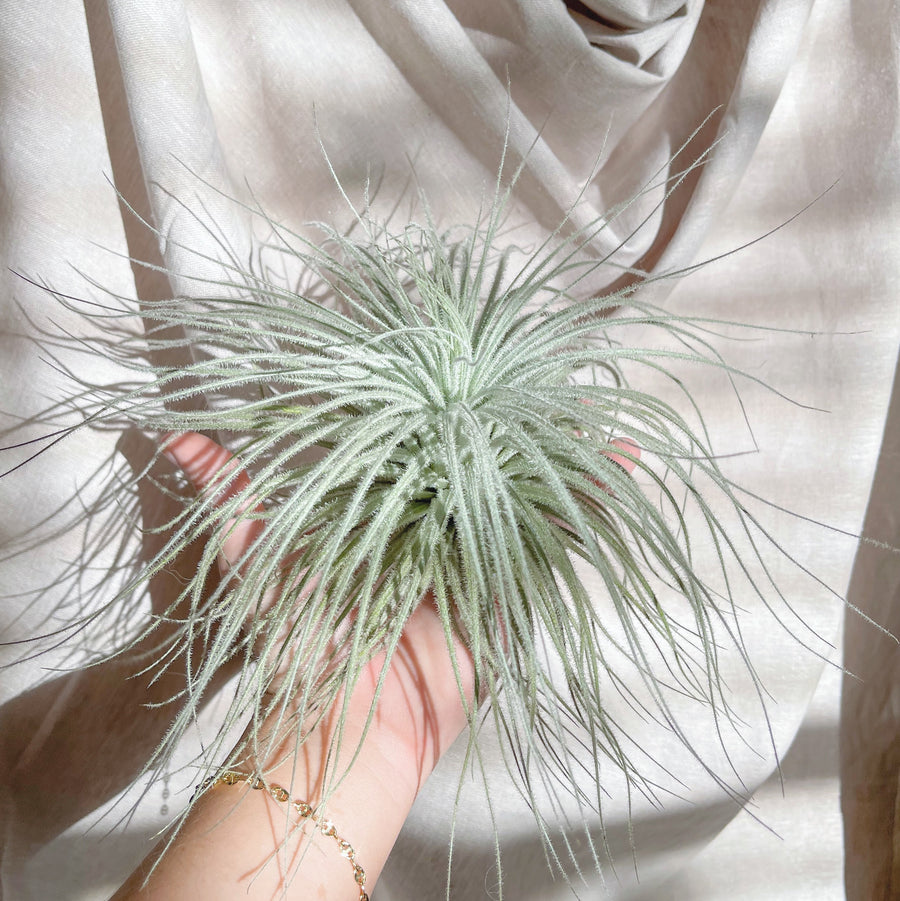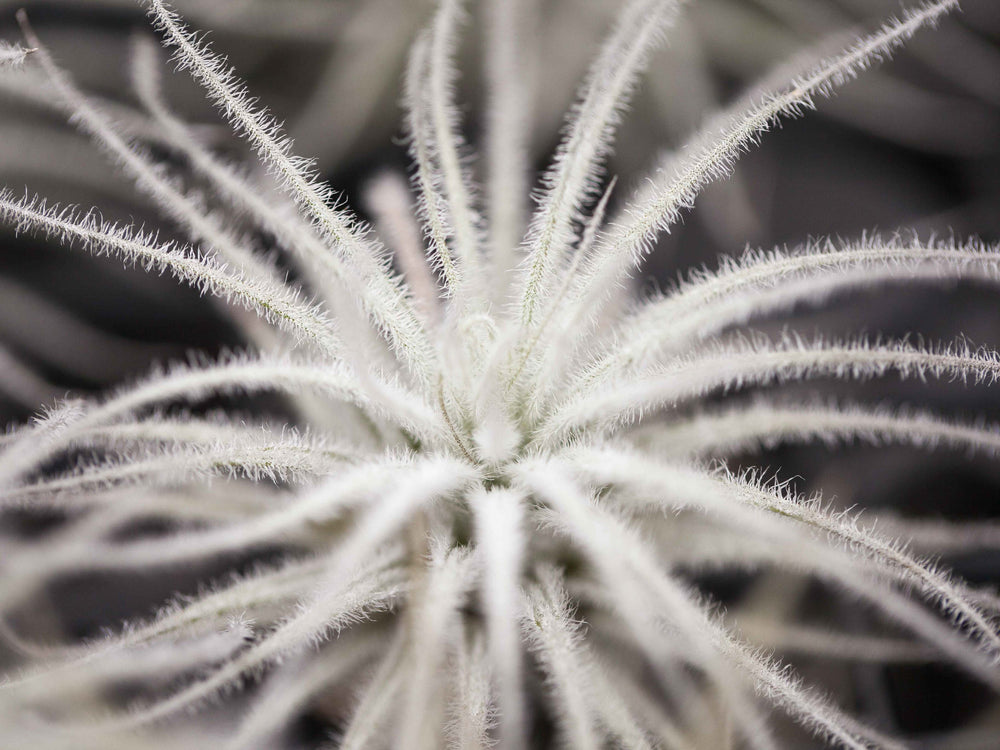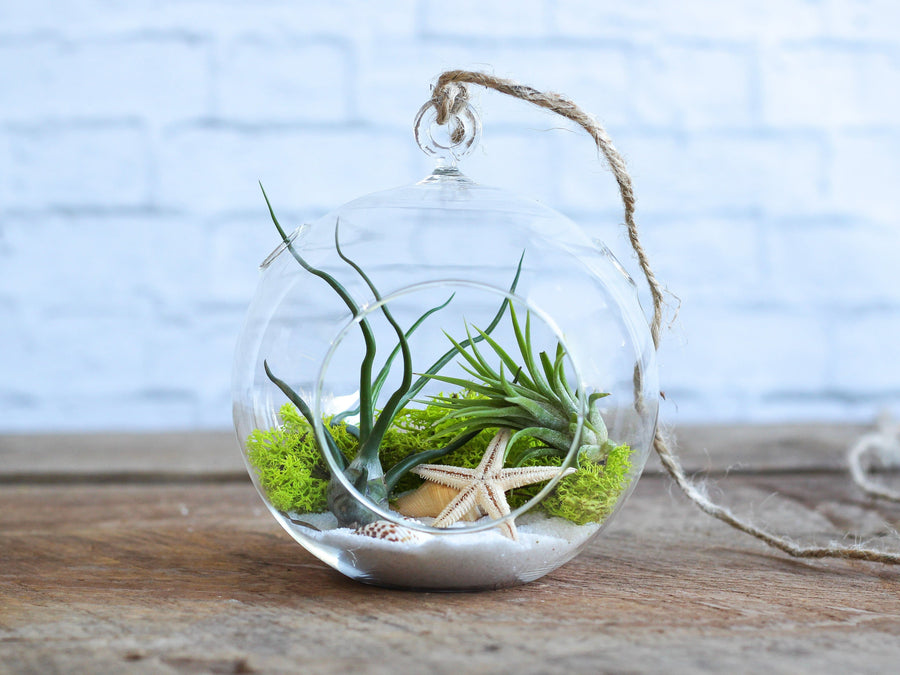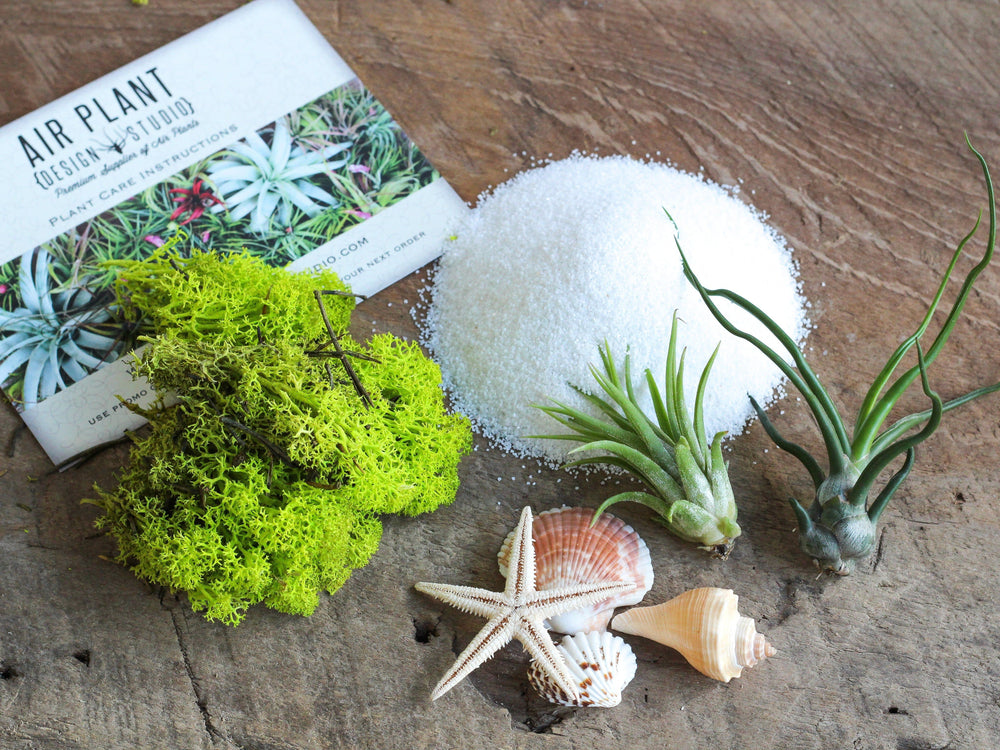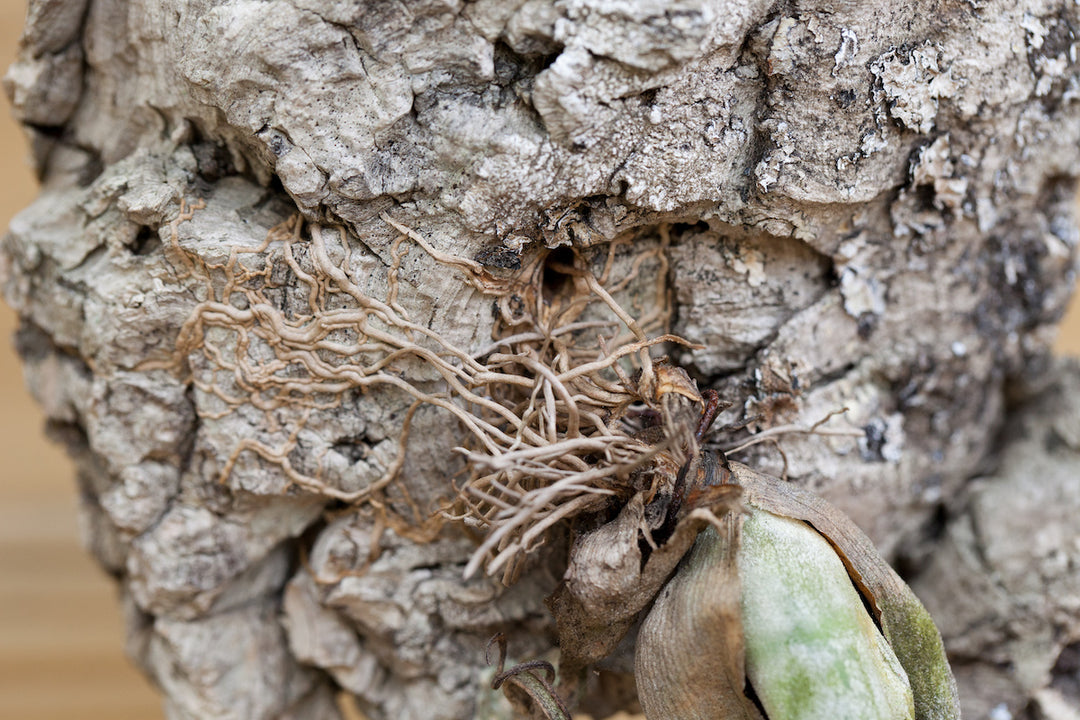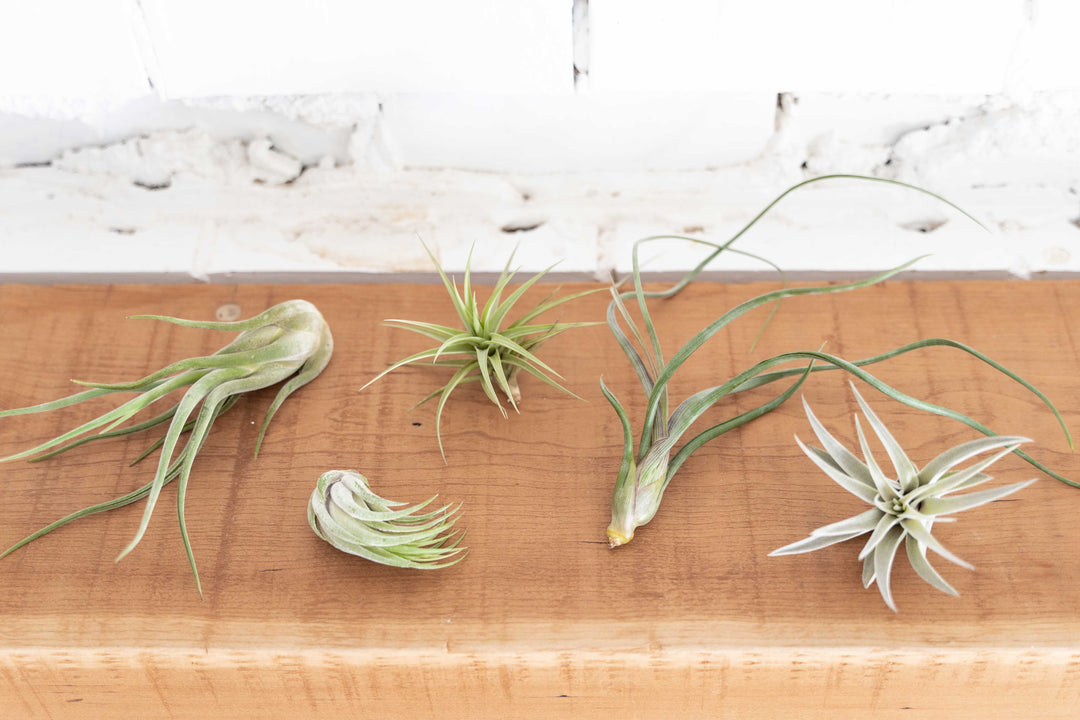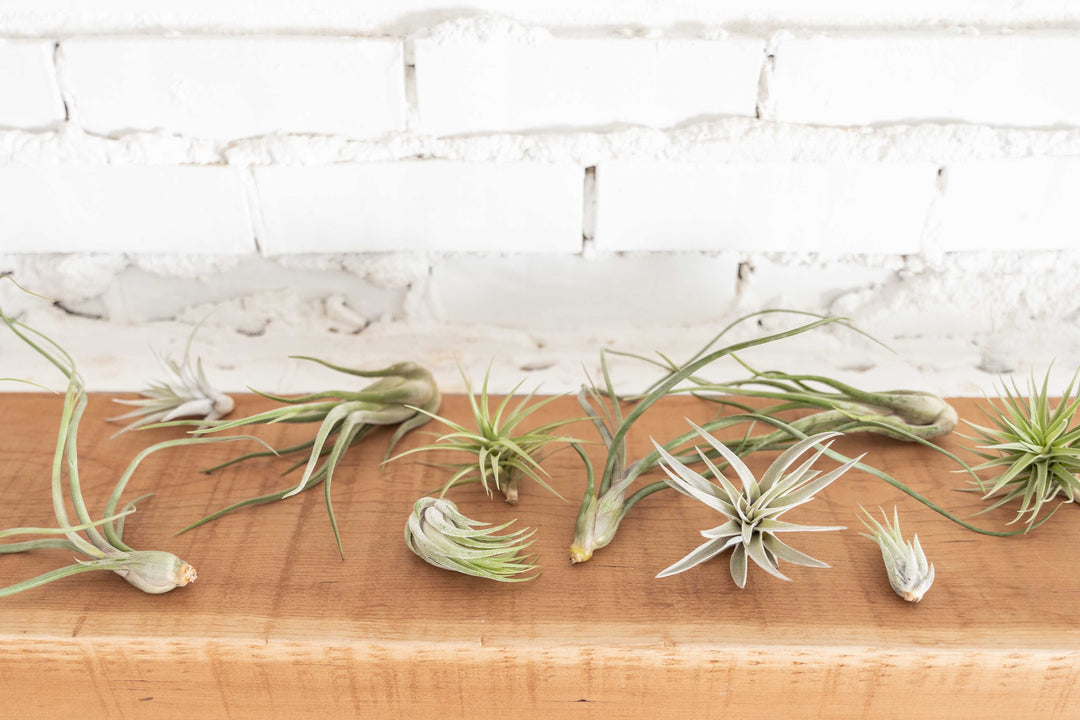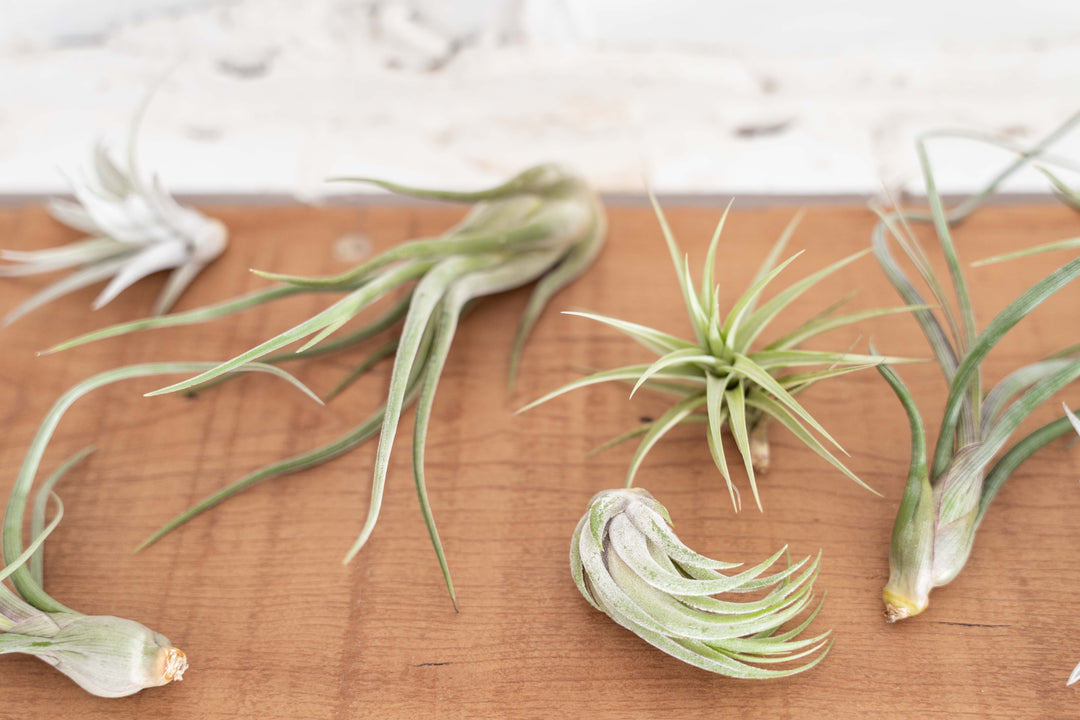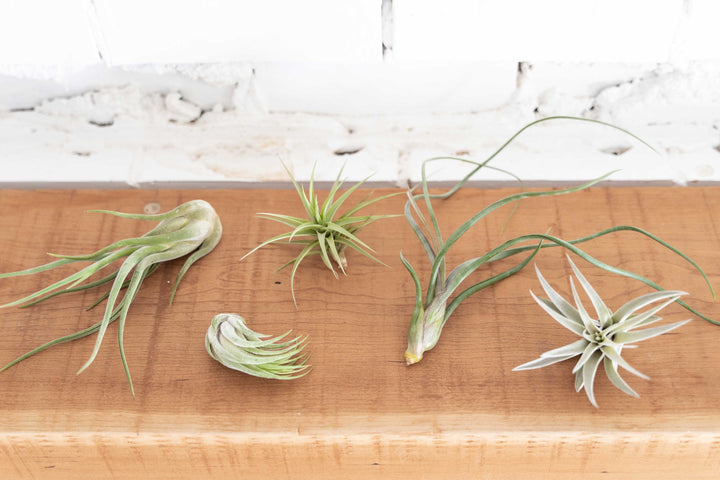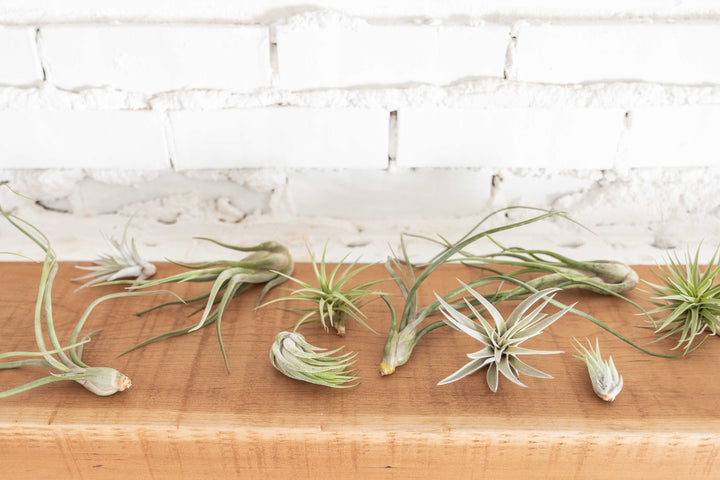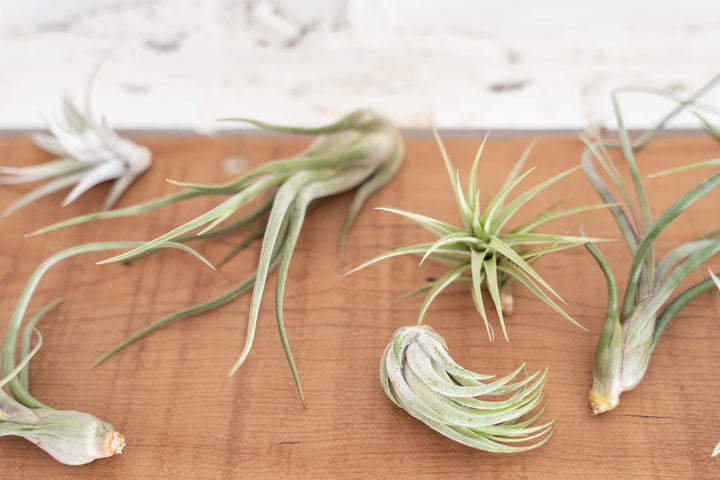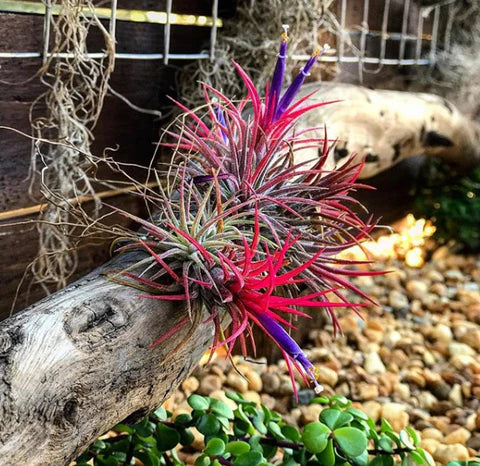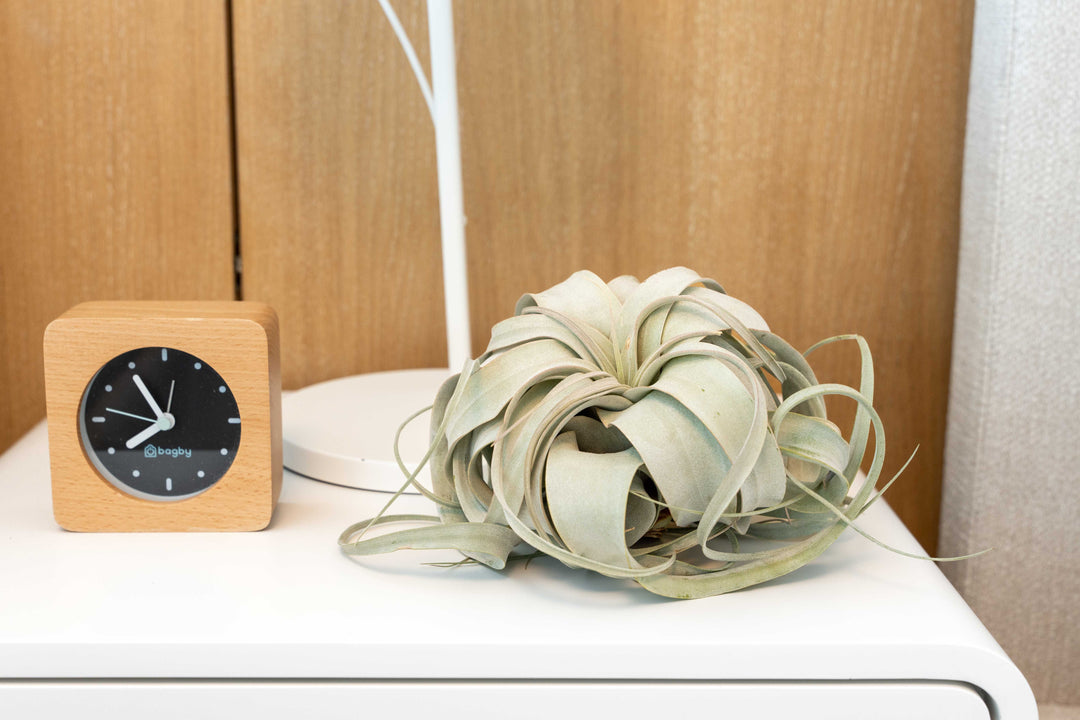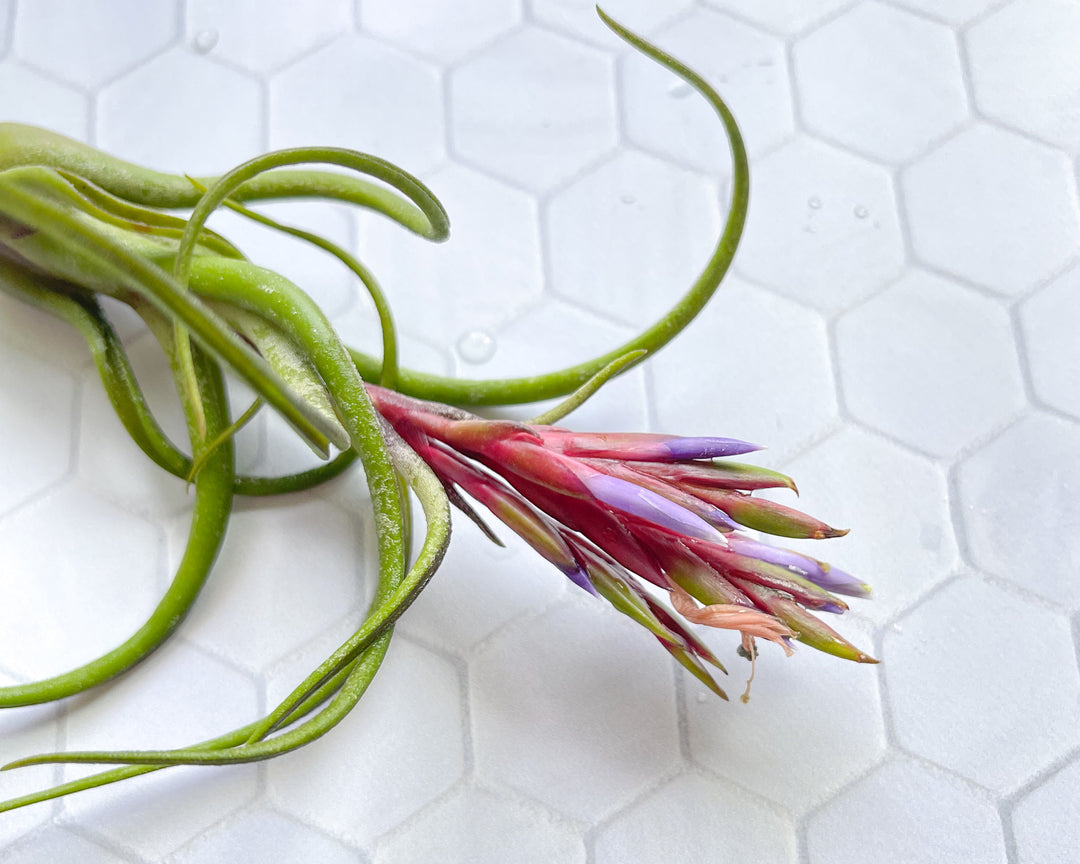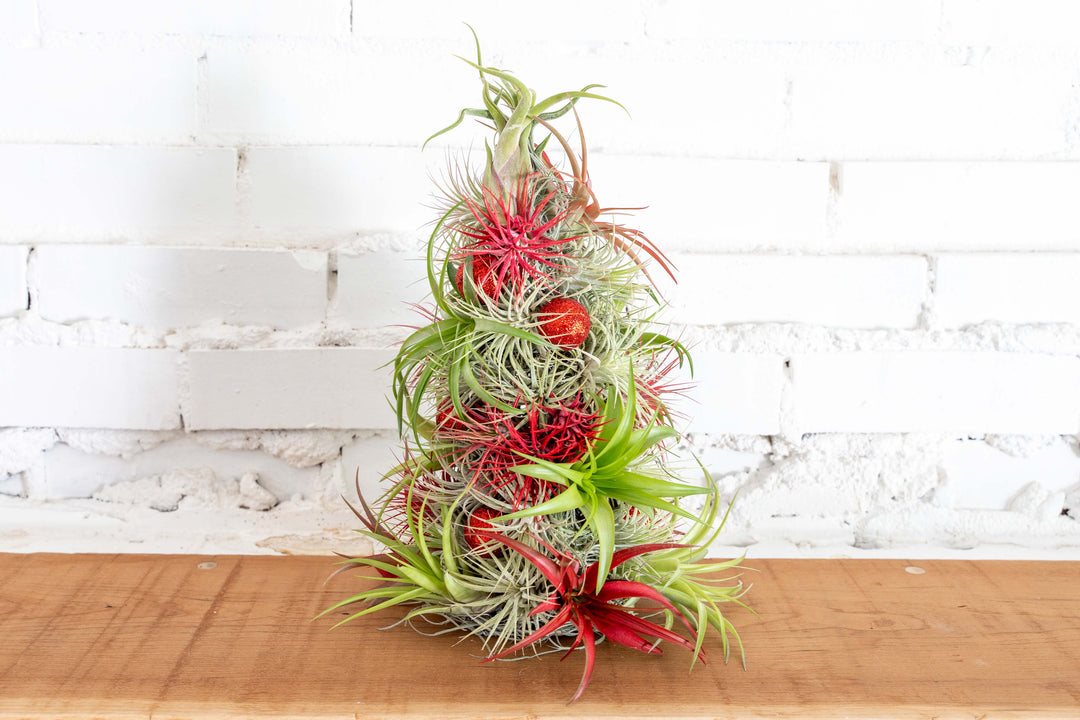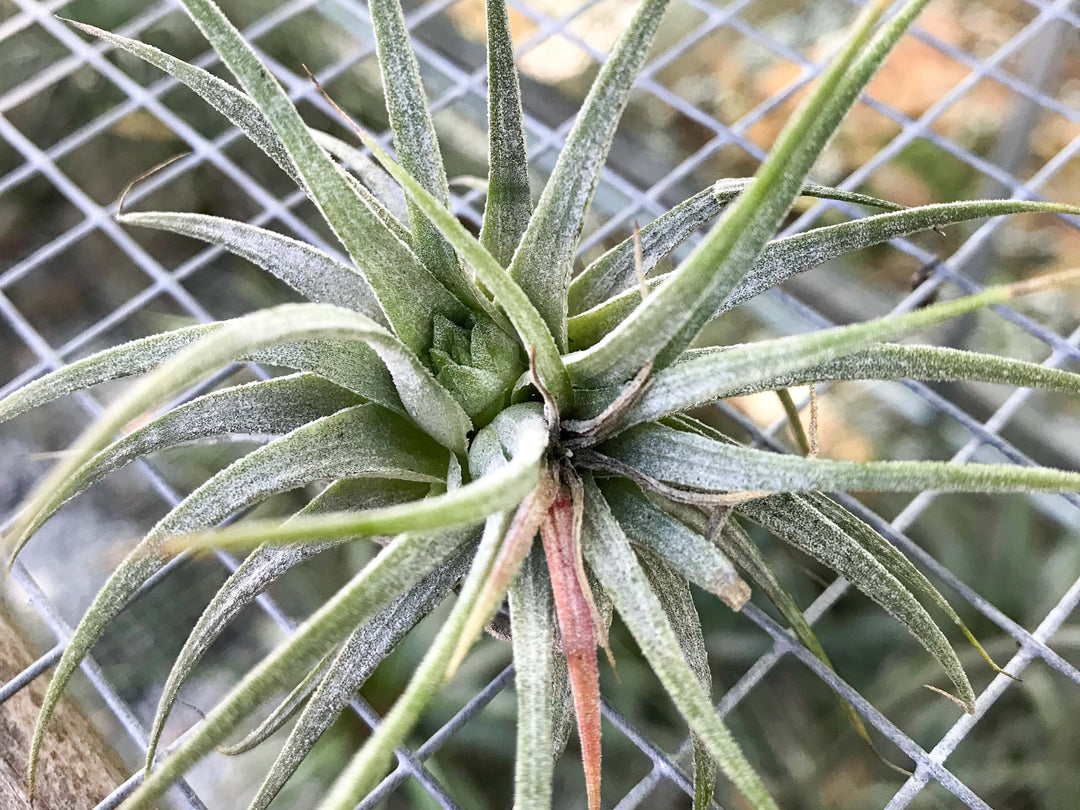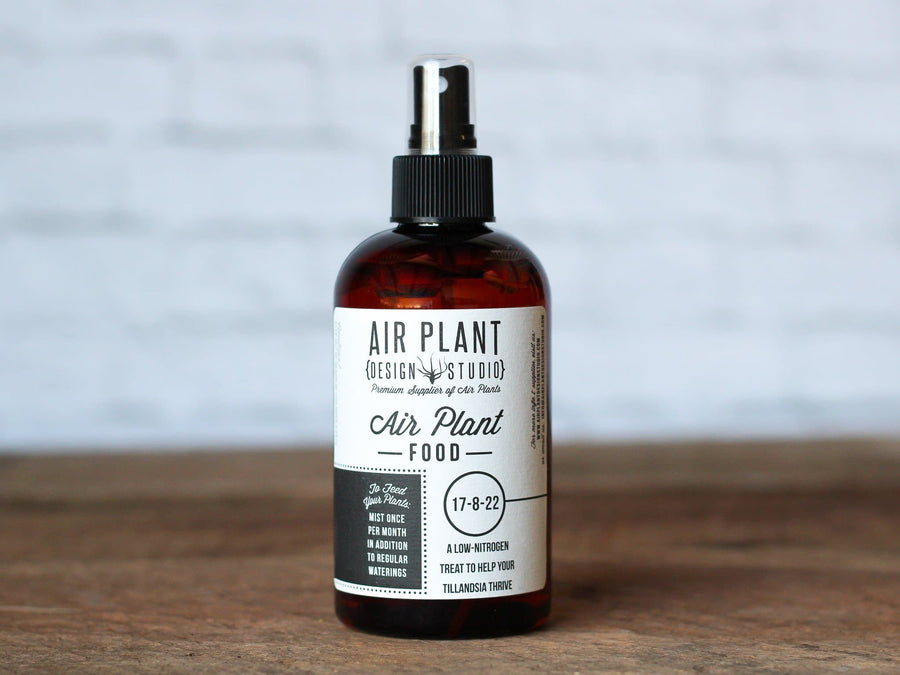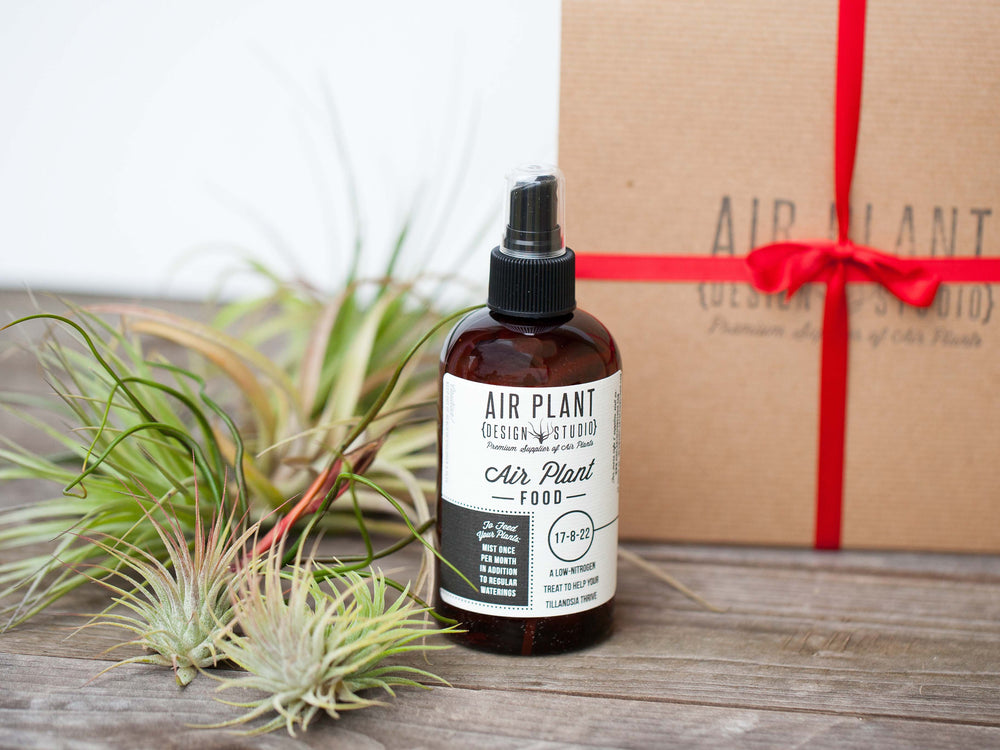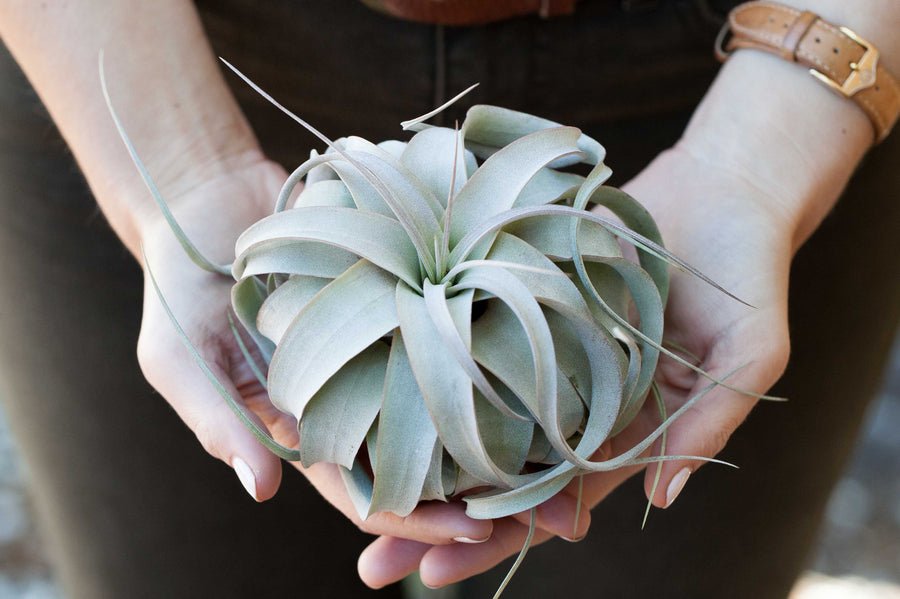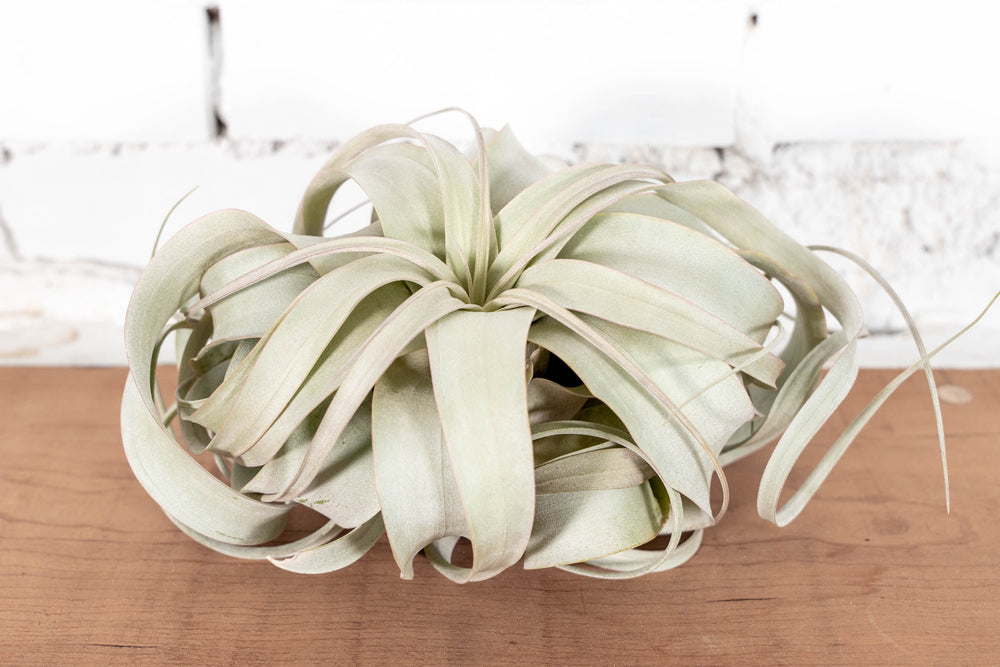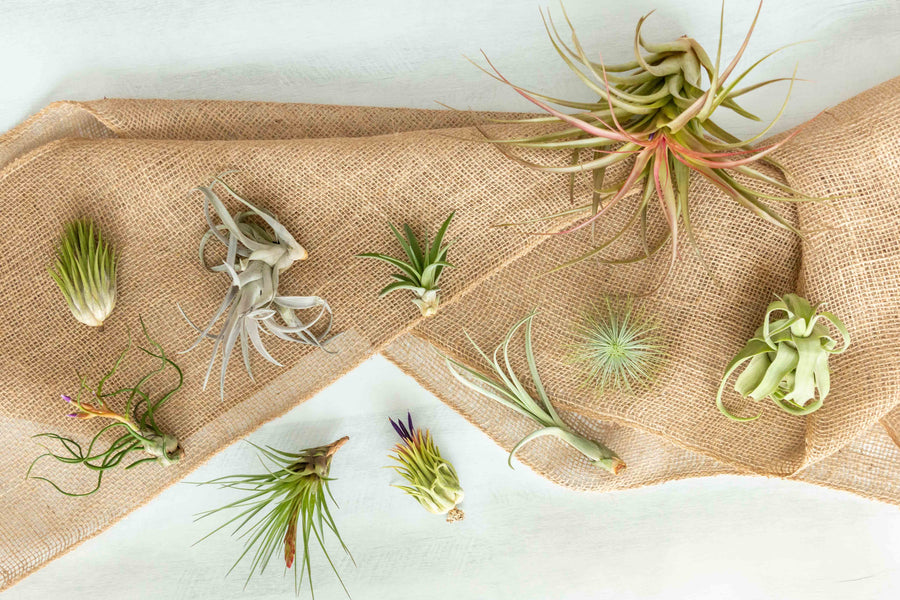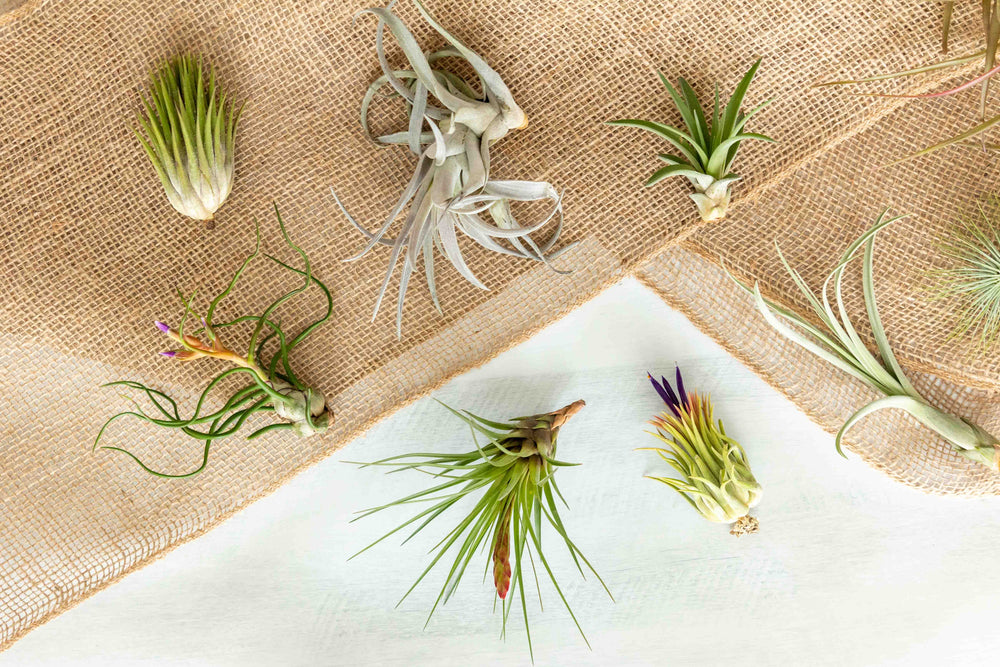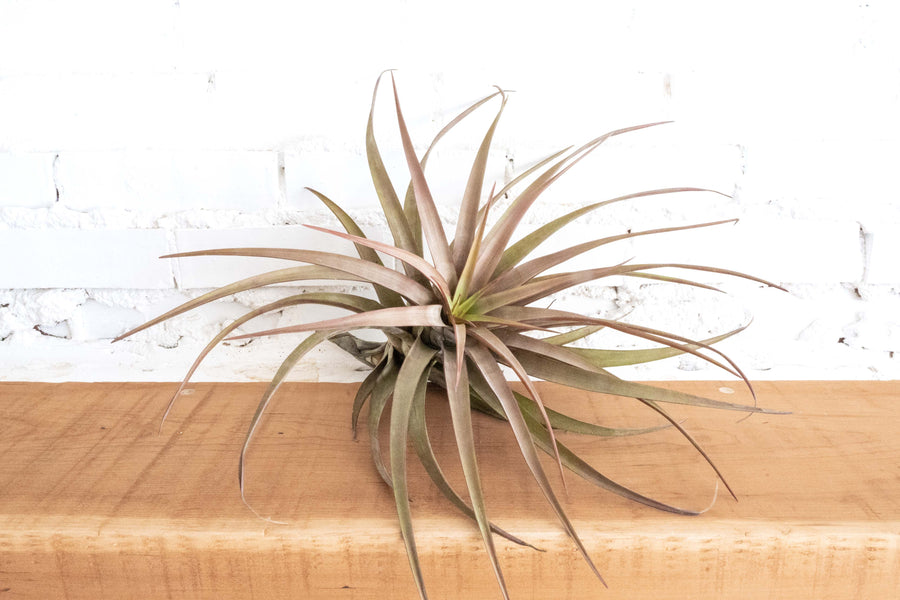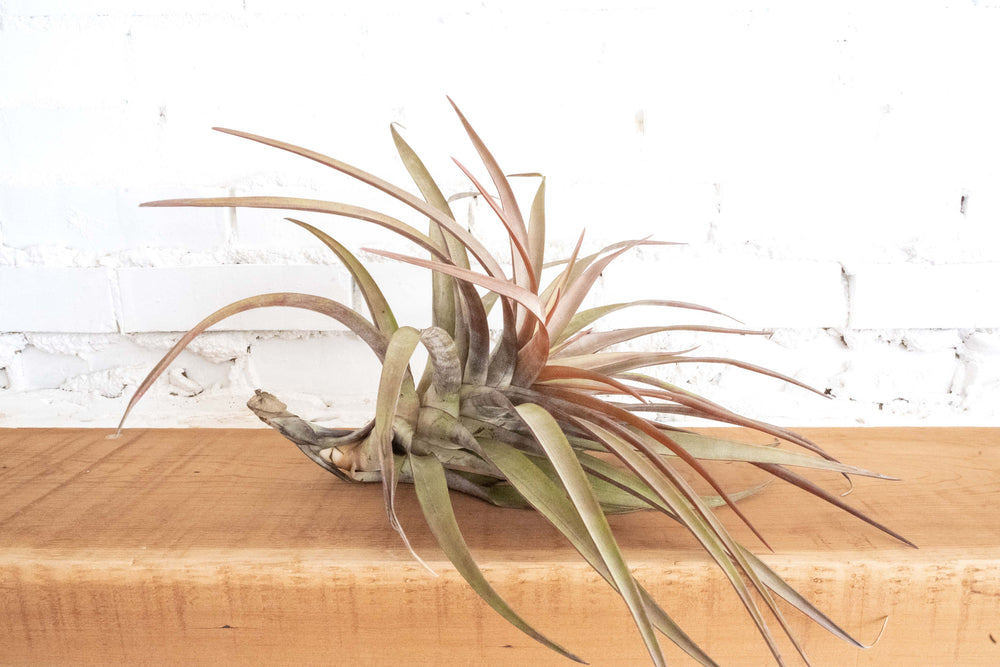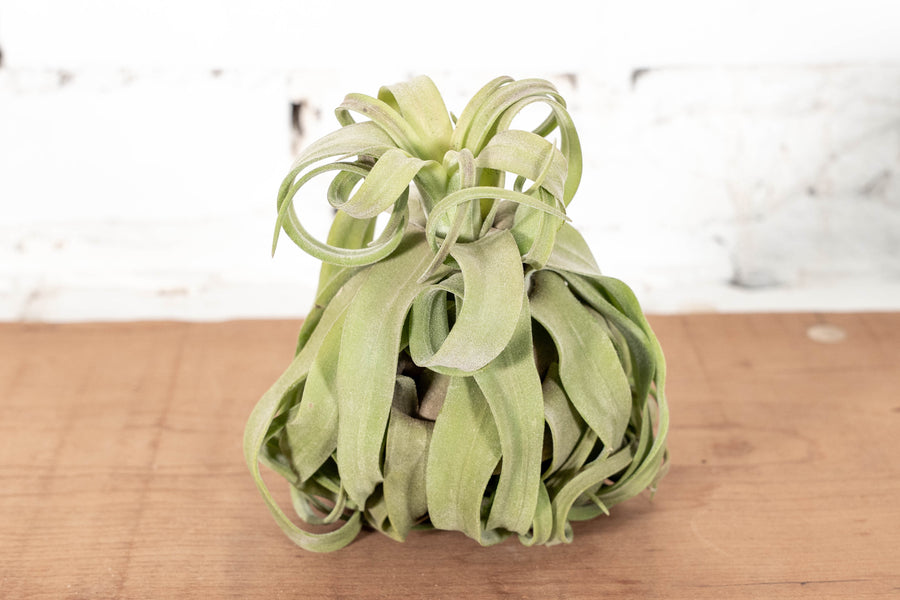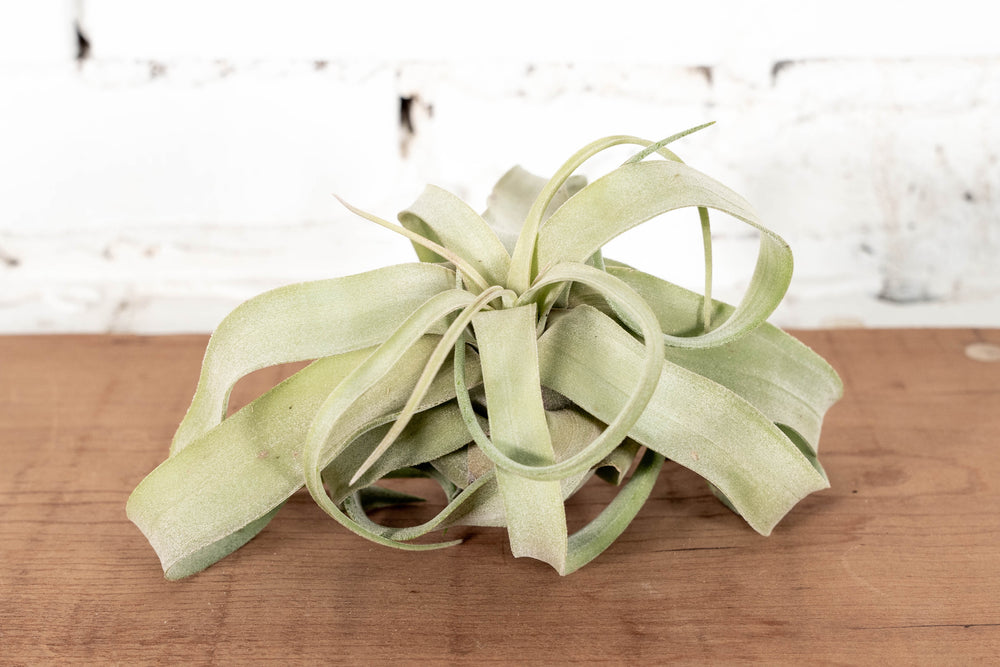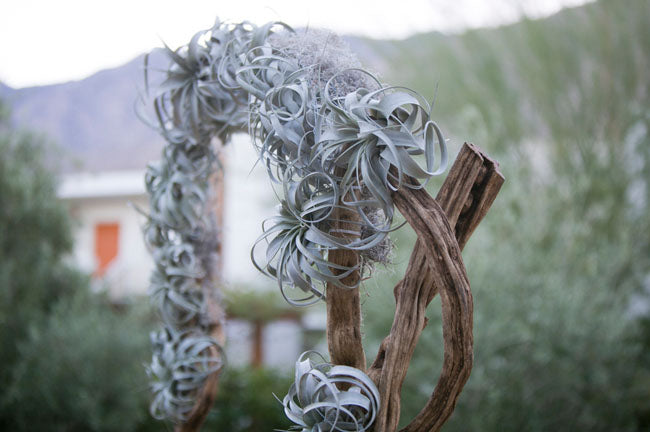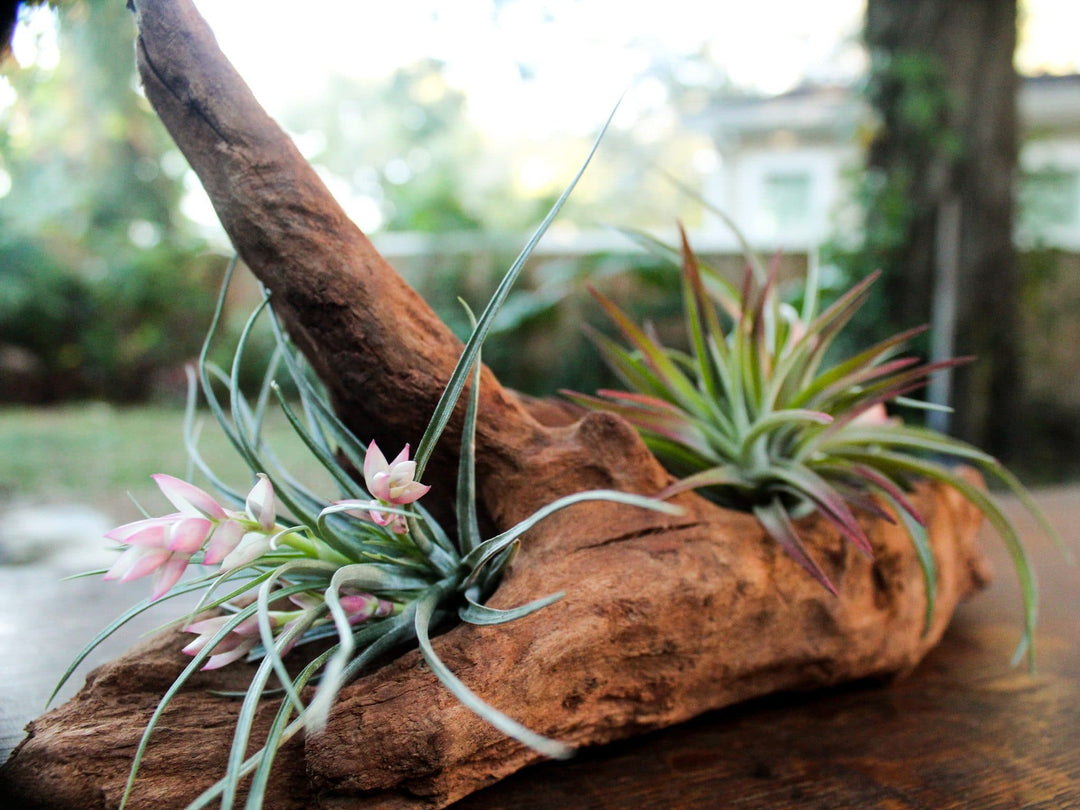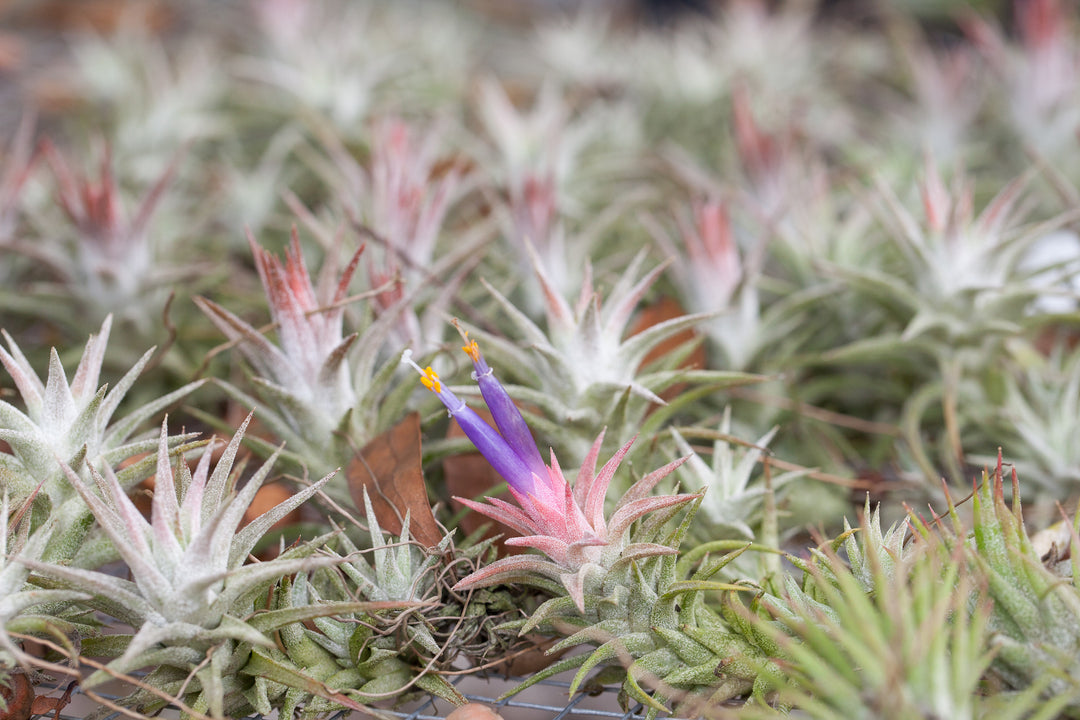Complete Air Plant Care Guide
Air Plants, also known as Tillandsia, are some of the easiest plants to care for - but they do require some care and proper environmental considerations in order to thrive. While they are called "air plants" as they do not require soil and take their nutrients from the air, they still need water, nutrients, and light to survive. Air Plants are technically epiphytes, meaning that they grow in nature on another tree, host, or object. However, they do not steal nutrients from their host, only using it as a home to grow on. Air plants use tiny vessels located throughout their leaves called trichomes to capture nutrients and moisture from the air.
Because they do not require soil (and most Tillandsia should NOT be planted in soil), it allows them to thrive in a wide range of settings, vessels and spaces. This flexibility of growth allows air plants to be used in a variety of scenarios which has lead to increased popularity of Tillandsia as decorations for homes and offices.
While air plants are known for being easy to grow, they still do need attention to survive and live a healthy life. If taken care of properly, Tillandia can live for several years and will even provide "pups" for additional years of enjoyment!
See below for information on how to care for your plant, and ensure many years of enjoyment. If you have any questions about caring for your air plant, you can email us at info@airplantdesignstudio.com.

New Guide: What's Wrong With My Air Plant?
We put together a detailed page to narrow down any concerns you may have with your air plants.
Environment
The first thing to consider when determining air plant care is your environment. While we offer a general list of air plant care tips here, it is critical that you consider your environment when determining things like watering method and frequency. If you live in a drier climate, you might need to water more frequently or mist daily in between soaks, whereas if your air plants are in a place where they receive abundant humidity from the air, you may need to water less.
Air Plant Species
There are species of Tillandsia, all of the unique in shape, size, growth patterns, and care preferences. While some air plant care tips will apply to the majority of Tillandsia, it's important to consider the air plant itself. In general, silver-leaved plants and those with a higher concentration of trichomes will do better with more light and a bit less water, whereas the darker green plants will want more water and could be more susceptible to sun damage.
Read our blog post on mesic vs. xeric air plants for more information on this. Also check out our blog for in-depth information on specific plant types. Questions on a specific air plant or not sure what plant is right for your environment? Email us!

Lighting Requirements
One of the most important things any living creature needs is light, and air plants are no exception. If you are keeping your plants indoors, you will want to make sure that they are near an adequate light source. This can be within 3-5 feet of a window, or near an artificial light source. Take care to not let your air plants get too much direct sun, as this can be harmful, even in an indoor environment. If you are keeping your plants outside, make sure they are in a shaded area that does not receive full sun. There are only a few varieties that can handle direct sun.
Air plants love being placed in a bathroom or kitchen window (indirect light), and the steam/moisture will keep them happy!
Artificial light can also be a sufficient source, as long as the plants are not too far from the light and receive adequate amounts per day.
How Much Light Do Air Plants Need?
One of the best things about air plants is that they require minimal maintenance as compared to many other house plants. However, this doesn’t mean that they are maintenance-free, and just like with most plants, the three main factors that can affect their health and life span are: air, water and light.
Watering Requirements
Place the plants face down in a bowl, sink, or container and lets soak for 10-20 minutes. Always take care to gently shake any excess water off the base of the plants, as sitting water can cause rot and damage/kill the plant. We recommend that you water the plants in the morning, and leave them out of their containers in an area that they can dry within 4 hours. Never let your air plant sit in water for a prolonged period of time. You can also water your plants using the "dunking" method, where you dunk the plants several times in the water, and gently shake off any excess.
If your plant is struggling and looks "thirsty" you can leave them in bowl for a longer soak of a few hours or even overnight. A healthy air plant will have wide open leaves while a dehydrated air plant will have closed and curled leaves! Never submerge the bloom or flower, as it can cause the flower to rot.
If you are using tap water, let the water stand for several hours to dissipate any chemicals prior to watering the plants. When possible its best to use pond, aquarium, or rain water. Bottled water and spring water are also ok to use, but never use distilled or artificially softened water!
Remember that each plant variety is different, and will require different watering schedules than others. Never put your air plants in soil, it will harm them!
Air
Another important variable that is important to your Air Plant, is you guessed it...Air! The plants will need good clean air circulation to survive and live a healthy life. Its important that after watering the plants have enough air circulation to dry within 4 hours. While Air Plants will do well in containers, it is recommended that they do not be displayed in enclosed containers, and that they are completely dry before they are put back into a container that might restrict air circulation.
Plants located too close to A/C vents may dry out sooner and require more frequent hydrating.
Terrariums & Glass Enclosures
If you are planning on keeping your air plants in a terrarium or globe, you will need to remove the plant for normal watering, and make sure to leave the plant out until is has had enough time to completely dry. Usually 4 hours will do. When the tillandsia is in the terrarium or globe, you can give it periodic mistings to create some humidity. The smaller and more compact the globe, the less mistings you will want to give your plants. If the terrarium is larger and has better air circulation, you can give it a few sprays from a water mister a few times a week. Just make sure to take care in ensuring the plant does not get over misted, and that it dries within a few hours while in the terrarium.
Sea Urchins
If you have purchased one of our amazing sea urchin kits, you will want to make sure to remove the air plant from the sea urchin when soaking. Leave the plant out from the sea urchin for several hours, until the plant is completely dry. You will damage the air plant if you return it to the sea urchin while still wet, as the base of the plant will be covered and will eventually rot. Feel free to mist lightly while still in the sea urchin!
All About Air Plant Roots & Why They Don't Need Soil
Air plants, or Tillandsia, are part of the family of plants known as epiphytes, which means that they anchor themselves to another plant but are not parasitic. Ferns, Tillandsia (and other Bromeliads), orchids, and most lichens and moss, all carry this epiphyte designation.
Temperature
Air Plants are found in a wide variety of temperatures, but mainly range from 50-90 degrees Fahrenheit. If you live in an area with freezing conditions, make sure your air plants are safe indoors!
Fertilizer
Bromeliad fertilizer can be used once a month in small quantities. You can also use orchid or any other indoor plant fertilizer that has low copper contents. Air Plants can be sensitive to fertilizers so make sure not to over do it!
Trimming
Over time your air plants will grow new leaves, and loose some. Feel free to trim any brown or dead leaves off your plant with scissors, trimming at an angle to give the end of the leaf a nature appearance after trimming. Most air plant varieties will be shipped with roots intact, and can removed if you like. The roots are solely used to anchor the plant to its host, and can be kept on the plant and used to anchor your plant to a display with a little superglue or hot glue.
Pups
As your air plant begins to mature and run through its bloom cycle, it will produce babies also known as "pups". You can either remove the pup once it reaches around 1/3 of the size of the mother plant, or you can leave the pups on and they will eventually form a "clump". An air plant "clump" can be hung be a string and is sure to impress as it grows and continually blooms!
Our Air Plant Care Blog
View allCustomer Favorite Air Plants
View allTry Our Best-Selling Air Plant Food
Want your air plants to grow faster? Feed your air plants with our air plant food! This low-nitrogen fertilizer has been specially formulated to help your air plants thrive. Use once per month to encourage growth, bloom cycle, and offset production.
In Summary...
There are three main things to be aware of when you are taking care of your Air Plant; Water, Air, and Light. Depending on your environment, you will need to adjust these variable to ensure you have a healthy plant. Pay attention to the condition of your plant, as it will tell you whether it needs more water, less light, etc. Over time taking care of your Air Plants will become second nature, and you will have many years of enjoyment with these beautiful and unique plants!
Each order comes with an air plant care card! Happy growing!


